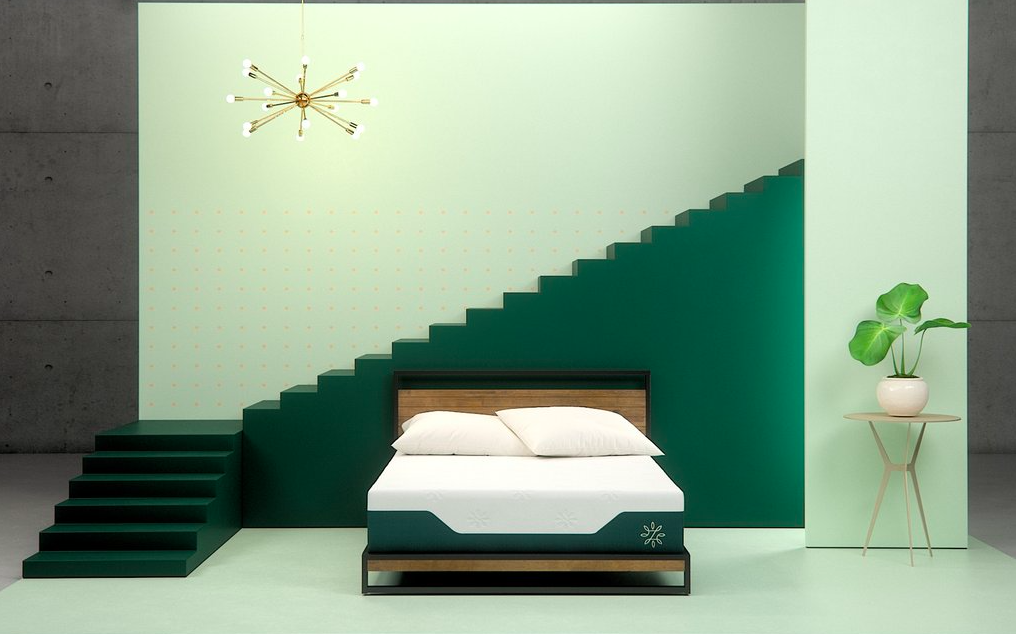Mattresses Signify Our Astonishing Prosperity
How did you sleep last night? If not well, it’s not for lack of mattress choice. If you are still sleeping on the thing you bought 20 years ago, it’s time to rethink. With a few clicks you can have a glorious new sleeping surface brought to you in a few days. You spend a third of your life in bed. The experience determines a major part of your life quality. Market competition has dramatically improved it.
The mattress market has changed over the last 5 years. There is more choice. Prices keep falling, to the point that you can get a solid mattress for a tenth of what it cost ten years ago. There’s no more slogging down to your local mattress store, being intimidated by a salesman who pushes you to spend more than you can afford, and then paying another $40 for delivery.
For generations, the $15 billion mattress market was dominated by Sealy and Serta. Then in the blink of an eye, there were all kinds of new choices: Tuft & Needle (my favorite), Casper, Purple, Leesa, Saatva, Sapira, Helix, Bear, Eve, 4sleep, PangeaBed, and I’ve probably left out many others. Most of these had what early in 2017 were considered fantastic prices: a twin bed for $300-$600. This is far better than the $1,000 and up you used to pay.
You thought you knew cheap and good. Then at some point in the last 6 months, a new name blasted on the scene: Zinus. Apparently, it is an older company that just jumped into the mattress industry, with the help of Chinese manufacturing. Maybe the company is using its mattress as a loss leader. In any case, you can snag a twin bed for $180 delivered.
Mic drop. The reviews are excellent. Now it is the #1 seller on Amazon, just in another blink of an eye. Isn’t market competition beautiful?
The Bad Old Days
Before we get too comfortable with the wonders of our age, consider the plight of our ancestors. What did people sleep on in the ancient world? Most people slept on the hard ground. The nobility could perhaps find some cloth stuff with reeds, hay, dried peels or beans or leaves or, if you were really lucky, maybe feathers wrapped in animal skin.
Fast forward 1,500 years to the first signs of progress and prosperity. In the Renaissance, mattresses were made from “pea shucks, straw, feathers, stuffed into coarse ticks, and covered with velvets, brocades, or silks.” I can’t even imagine how many tiny bugs lived in those mattresses. We think we have a problem with bed bugs today! Then there were the problems with varmints, snakes, scorpions, roaches, and other unthinkable things.
Two hundred years later, cotton was more common but then there were the lumps. After one night, the thing would take on your body shape, such that it probably felt like your coffin after just one week.
Even the highest luxury of the 18th century no one would stand for today.
Coils and Water
Then came the late 19th century with the invention of coils. For the first time, we could sleep with actual support on our backs! What an amazing advance it must have been.
Nothing much changed until the late 1970s, when this strange thing called the waterbed came along. True confession: I was briefly a waterbed salesman when I was a kid. It was a hilarious experience because while they were strangely popular, it turns out that people didn’t like them very much. They would come back to the store and report, well, they don’t like sleeping on water. Too many waves.
So the floor manager instructed us to trade them in for one with “baffles” which were rubber layers designed to reduce the motion of the bed. We ranked the level of baffles from 1 to 10. People would get one with a level 5 baffle and come back. Finally they would buy a 10 baffle waterbed, which pretty much had no movement at all. It was very nearly a normal mattress.
(I was also responsible for installation. So I would go to people’s houses and drag their garden hose through the window and start filling the thing up. The weight was amazing, as much as 2,000 pounds. Yes, in those days, I did indeed meet some strange folks who wanted these things. I see now you can still buy a waterbed but all of them are advertised as “waveless.”)
After the waterbed craze, everyone went back to springs but with ever more layers of foam. But the big problem with foam in those days was that it was too hot to sleep on. It took a lot of innovation to deal with that problem. Now that problem is mostly gone, with nearly every mattress on the market claiming not to sleep hot at all. In any case, we have wonderful mattress pads now.
So here we are, with fantastic mattresses, pillows, and sheets available to all, sleeping in rooms that are heated and cooled, free of bugs and snakes. And this lifestyle is within the means of nearly every living person in the developed world. Today I see old mattresses sitting next to dumpsters all the time. Only 50-100 years ago, these would have been treasures. Now they are trash that no one wants.
Again, consider our good fortune. A third of our lives are spent on mattresses. A solid sleep is determinative of a good life. And get this: you didn’t build that mattress. Someone else is working right now for you, in the hope that you will buy. That’s called the market at work: endless progress, a beautiful community of work, ever better quality, ever lower prices.
Forget counting sheep. Count your blessings instead.











